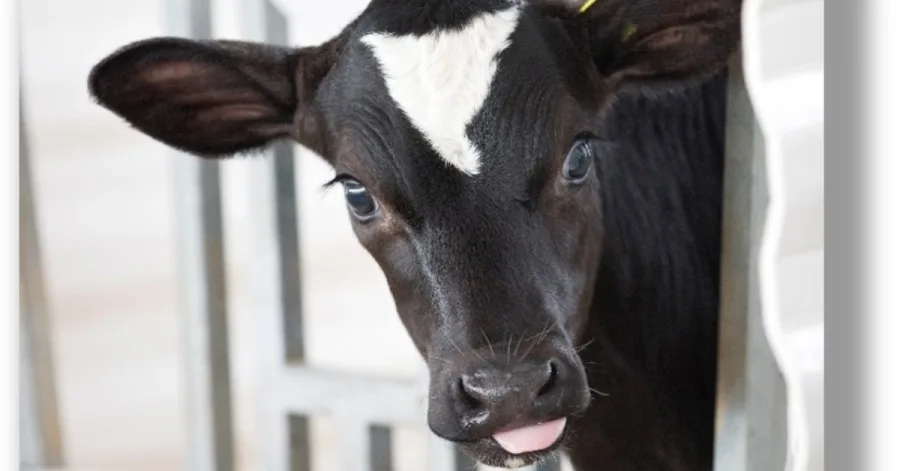Explore how heat stress affects dairy cattle in more ways than just reducing milk production. Understand its impact on unborn calves and the overall health of the farm. How can we reduce these risks?

Heat stress has long-term effects that are more severe as temperatures increase. Heat stress is more than just a nuisance in the dairy business; it also seriously affects other aspects of operations beyond milk production. In the United States, annual losses from heat-stressed dry cows top $1.5 billion; the broader consequences damage immunological function, reproductive health, and fetal development, jeopardizing the viability of dairy businesses.
Although heat stress affects milk output, its effect on fetal growth compromises future resilience and output. Not just financially but also ethically, reducing heat stress during the dry months guarantees the health and sustainability of successive generations of dairy cows.
The Multifaceted Economic Toll of Heat Stress in Dairy Farming
| Category | Economic Impact (Annual) |
|---|---|
| Milk Production Loss | $900 million |
| Reproductive Health | $320 million |
| Fetal Development | $190 million |
| Immune Function | $100 million |
| Other Related Losses | $50 million |
| Total Economic Impact | $1.56 billion |
Heat stress’s financial effects on the dairy sector go well beyond the acute drop in milk output. Although the startling $1.5 billion yearly loss in the United States resulting from dry cows is noteworthy, it only addresses dairy farmers’ more general financial difficulties. Heat stress reduces reproductive efficiency, which lowers conception rates and increases calving intervals, therefore lowering the herd’s total production and profitability. Furthermore, decreased fetal development produces smaller calves with reduced birth weights, which increases veterinarian expenses and raises death rates.
Furthermore, heat-stressed cows’ compromised immune systems increase their vulnerability to illnesses such as mastitis, which calls for more frequent medical visits and increases treatment expenses. These health problems cause immediate costs and shorten the afflicted animals’ lifetime and output, therefore aggravating the economic load. The reduced capacity of heat-stressed cows to realize their genetic potential results in a long-term financial load as farmers have to spend more on maintaining herd health and performance.
Moreover, heat stress’s knock-on effects might upset the whole supply chain. Reduced milk supply reduces dairy products’ availability, influencing market stability and possibly pushing up costs. The combined influence of these elements emphasizes the crucial need to implement sensible heat-reducing techniques. Farmers may protect their financial interests by prioritizing their herd’s well-being, guaranteeing their activities’ continued profitability and sustainability.
Heat Stress in Dairy Cattle: Undermining Reproductive Health and Fetal Development
Heat stress disrupts endocrine processes and compromises reproductive cycles, seriously affecting the reproductive health of dairy cows. Increased temperatures disrupt hormonal signals vital for ovulation, lowering conception rates and compromising effective fertilization and embryo implantation.
Heat stress also reduces udder growth, therefore reducing milk output and quality. Excessive heat changes blood flow and nutritional availability to udder tissues, reducing milk output and aggravating the financial losses experienced by dairy companies.
Heat stress also affects prenatal development; stressed cows often have smaller calves with compromised organ development. These long-term effects emphasize how urgently efficient heat-reducing techniques are needed to guarantee the health and survival of future generations within the herd.
Insidious Impacts of Heat Stress During Late Gestation: A Threat to Future Herd Productivity
Heat stress badly affects fetal growth in the latter trimester of pregnancy. This period is absolutely necessary for fast development and essential organ development. Reduced uteroplacental blood flow during mother heat stress causes smaller nutrition and oxygen availability, which lowers birth weights and organs. These shortcomings affect development long-term.
Less functioning and smaller immune organs, such as the thymus and spleen, increase the calf’s illness susceptibility. Besides, poor thermoregulation causes the calf to struggle with temperature fluctuations throughout its life. These problems stop the calf from realizing its full genetic potential by hindering its development and output.
Every incidence of slowed-down fetal development influences the future output of the herd. Over time, this results in lower milk output, more veterinary expenses, and higher morbidity and death rates. Therefore, farm sustainability is in jeopardy as the residual effects of heat stress progressively compromise the economic viability of dairy enterprises.
Maternal Heat Stress: A Silent Saboteur of Calf Immunity and Long-Term Viability
Maternal heat stress during pregnancy has far-reaching effects, especially on the immune system of unborn calves. Higher prenatal temperatures impair the growing immune system, increasing susceptibility throughout life. The first significant checkpoint for a newborn’s immune system is the absorption of antibodies from colostrum, the first milk post-parturition. Heat-stressed moms generate infants with a much-reduced capacity to absorb these essential antibodies, which compromises start and raises vulnerability to illnesses. Reduced functioning from the beginning and weakened immune organs like the thymus and spleen aggravate the young animal’s difficulty in building strong immunological responses. These early difficulties constantly hinder reaching full genetic potential and contribute to farm success by endangering immediate survival and interfering with long-term health and output.
A Detrimental Cascade: Heat Stress and its Consequences on Fetal Growth and Immunological Development
Heat stress seriously alters the fetal nutrition supply, which results in undeveloped organs and reduced birthweights. Restricted blood flow to the uterus and placenta reduces the fetus’s supply of nutrients and oxygen. This deficiency reduces fetal development, producing smaller babies with reduced organ function.
The effect on immunological organs such as the thymus and spleen is particularly worrying. Crucially part of the immune system, these organs are sometimes smaller in calves born from heat-stressed cows. Important for T-cell generation, the thymus, and the spleen—key for blood filtration and building immunological responses—are compromised, reducing the calf’s lifetime capacity to fight infections. This compromised immune system increases disease sensitivity and reduces long-term health and productivity.
The Vicious Cycle of Heat Stress: Impaired Thermoregulation and its Lifelong Consequences
A calf’s capacity to control its body temperature is seriously disrupted by maternal heat stress, a result of which embryonic development of the hypothalamic-pituitary-adrenal (HPA) axis suffers. Rising prenatal temperatures impede this vital mechanism, which causes lifetime thermoregulation problems. Born from heat-stressed moms, calves often suffer from chronic conditions, including overheating, poor feed intake, and slowed development rates. As these animals lose their ability to control environmental stresses, their immediate survival post-birth and long-term production is threatened, jeopardizing their general health and farm performance.
From Economic Strategy to Moral Imperative: Addressing Heat Stress During the Dry Period in Dairy Farming
Dealing with heat stress during dry times goes beyond just financial need; it is a great moral and financial need for the dairy business. Heat stress disrupts more than instantaneous milk production deficits. Among them are problems with reproductive health, poor fetal development, and decreased immune system—a whole costly load cascade. Ignoring these problems compromises not just present profitability but also sustainable dairy production.
Our obligations go beyond money. We must ensure dairy cattle are healthy, well-adjusted, and future-productive as their caregivers. During vital times like gestation and the dry phase, heat stress compromises the potential of future generations. It increases their susceptibility to ongoing health problems and lowers viability. By giving techniques to fight heat stress first priority, we protect our financial interests and maintain moral standards, thus assuring that dairy cattle flourish for the next generations.
The need—moral as much as financial—to reduce heat stress drives us to put strong plans into action. These steps may guarantee the lifetime, output, and resilience of dairy herds, thereby fostering sustainability and moral responsibility for future generations.
The Bottom Line
Deeply affecting dairy cows, heat stress affects not only milk output but also the immune system, reproductive health, and foetus development. These consequences compromise the herd’s future output and the financial feasibility of dairy farms. Reducing heat stress, particularly during the dry months, is crucial for protecting fetus health and guaranteeing the resilience of dairy farming businesses.
The long-term success of a farm depends on investments in calf health. Meeting Youngstock’s requirements will help them resist heat stress, avoid immunological problems, and increase the farm’s profitability and sustainability. Our moral and financial obligations are to give the wellbeing well-being of the next generation the first priority.
Dairy producers must implement sensible heat stress-reducing plans. These include maximizing barn conditions, guaranteeing enough water, and using technology to lower heat exposure. These actions will help us preserve our herds, increase output, and advance environmentally friendly dairy production for future generations.
Key Takeaways:
- Heat stress disrupts normal udder development, impeding milk production directly.
- Economic losses from heat stress exceed $1.5 billion annually for dry cows in the U.S.
- Reproductive health and fetal growth are significantly compromised due to heat stress during gestation.
- Maternal heat stress affects the calf’s ability to absorb antibodies from colostrum, weakening its immune system from birth.
- Reduced fetal nutrient supply leads to lower birthweights and smaller immunological organs.
- Heat-stressed calves struggle with body temperature regulation throughout their lives.
- Addressing heat stress is not just an economic necessity but also a moral obligation for sustainable dairy farming.
Summary:
Heat stress is a major issue in dairy farming, causing annual losses of $1.5 billion in the US. It affects milk production, reproductive health, fetal development, and immune function, threatening dairy businesses’ viability. Heat stress results in milk production losses of $900 million, reproductive health losses of $320 million, fetal development losses of $190 million, and immune function losses of $100 million. This reduces reproductive efficiency, increases fetal development, and increases medical costs. Heat-stressed cows’ compromised immune systems increase their vulnerability to illnesses like mastitis. The knock-on effects of heat stress can disrupt the entire supply chain, affecting market stability and potentially increasing costs.
Learn More:
For a comprehensive insight into the long-term consequences and effective prevention strategies, explore the following resources:












